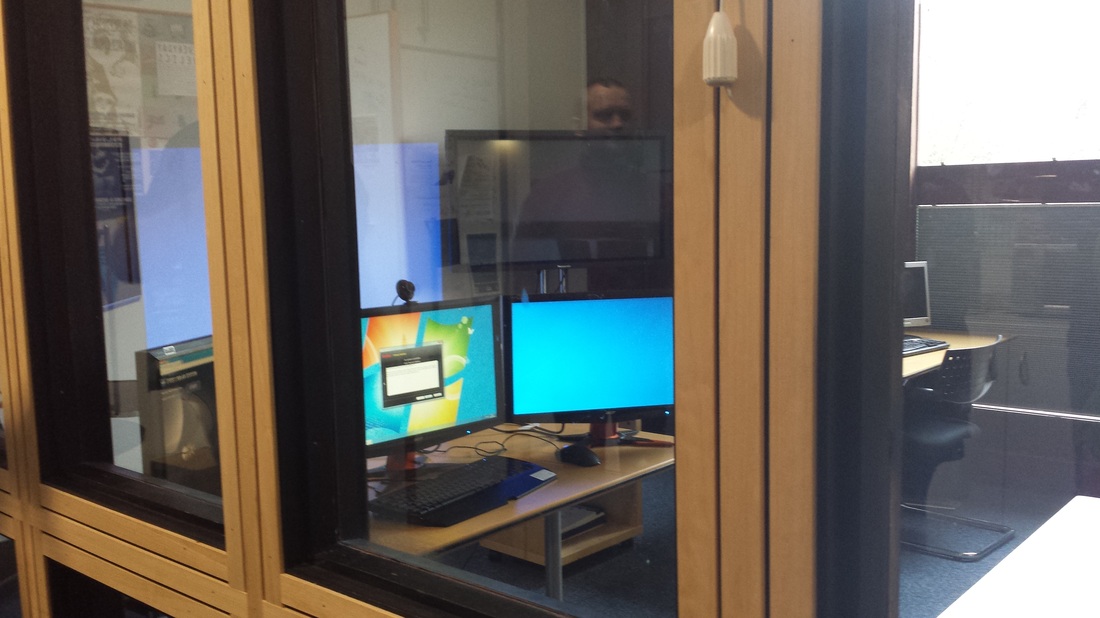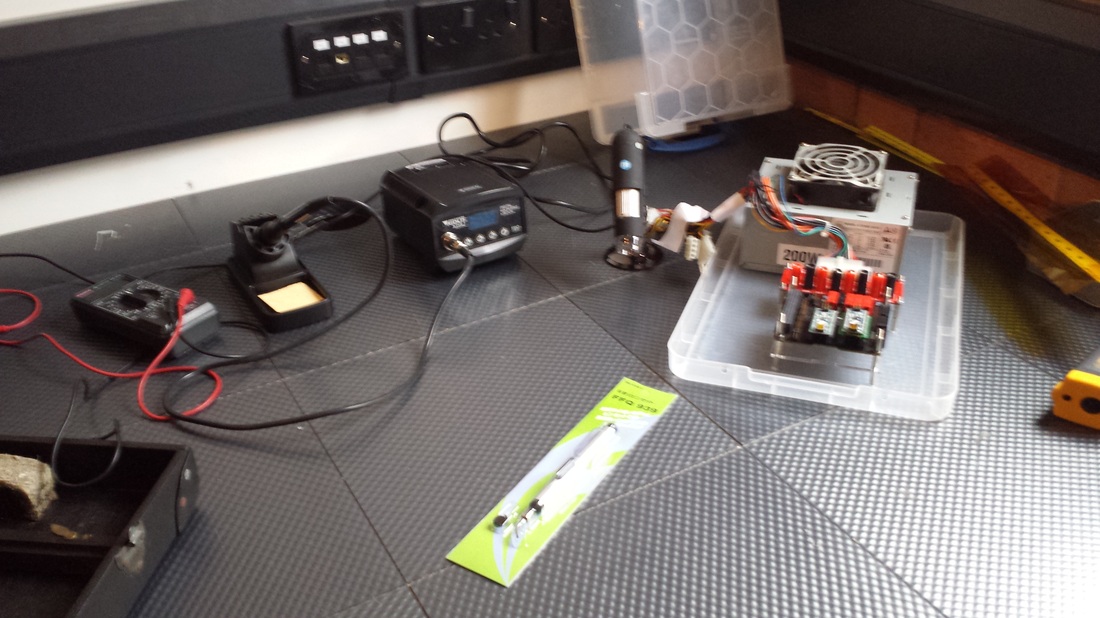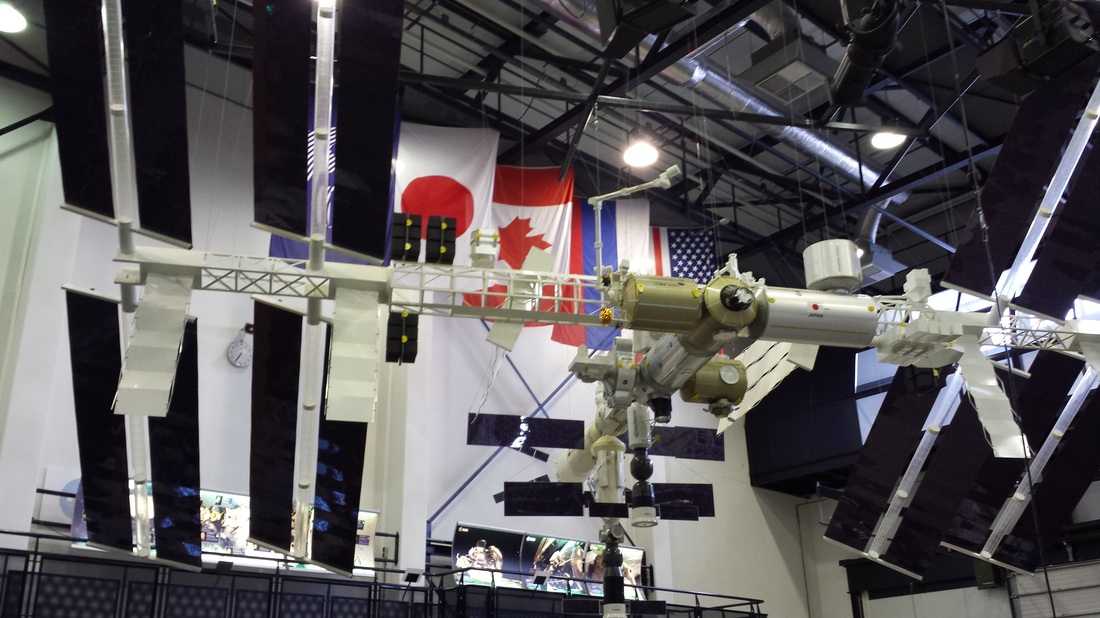|
It was fun at the first ever SpaceUP UK! It was 2 full days of action in a perfect layout at the trendy King's Cross Impact Hub, with the support of 2 friendly staff. Here is a full view of the room(s) while we eagerly awaits for everyone's arrival! People came from all parts of Europe, as well as all parts of UK to host sessions and participate in discussions. People of NASA and of ESA came along too! The event has been reaching far and wide. On social media, it reached 2.4 million audience on earth, and a little bit beyond. In fact, SpaceUP:UK has reached slightly beyond the crust of Earth with @Astro_Alex setting the records by tweeting to us from the orbit, yes, from the orbit! Three seem to be the magic number during the weekend! There were three rooms, three organisers, three sponsors and three breaks for each day. Incidentally, three astronauts said "Hi"s too. @Astro_Alex said hi from the Orbit and @Astro_Wheels from Mission Control, Houston. Tim Peake said Hi on Skype from Start City at Russia and we continued on for a good half an hour (+) of Q&A! It was amazing and much appreciated for Tim to take some time to talk to us during the busy training schedule in Russia. Don't forget to take the tea into space, Tim! The days were packed and the three rooms were running at capacity. Exhibitors has created a great atmosphere and discussion areas. Unexpected conversations came up at the ISU stand when Steph and Chris started to talk about art and how it mixes with space. It was a perfect event for discussions, discussions and discussions: Citizen Inventor had 2 modest booking at the Mars room to discuss how to kick off projects on cubesats together, as well as how to get EXOSKN, the open source space suit project off the ground. A lot of useful discussion and the rooms were packed with extra chairs on both sessions. So thank you all for contributing on the day. More importantly, please help to keep the discussion and everything else going, join us and take some actions! Watch out for upcoming events to get more projects off the ground. It's never too late to join.
Towards the end, Kate (one of the organisers) was spotted to be under the influence of a different gravity in Mars (room), or was it the effect of Pubs nights?
If you've missed all these, well, don't miss the next one! But you can still catch a glimpse of SpaceUP:UK with regards to the schedule and topics covered at SpaceUP:UK's schedule page. Links to presentations are getting updated in time, so keep checking back over the next month or so. Media coverage will be updated there over time too, so keep polling the site.
For the very first time, SpaceUp is coming to London on the 5-6 July: SpaceUp UK organised by a small group of volunteers. Catch this chance, come along and show that you care and wanted something like this to happen in the UK more often! Tickets are available at spaceupuk.org now and check the website for useful information which would be post up over time. Unlike a traditional conference, an “unconference is a participant-driven meeting”. Preparing for it sounds heavy perhaps getting to understand the concept is a better way to describe it. But none the less, this great guide will give you a lot more details on how to prepare to attend an unconference (pdf). But in short, going to an unconference is like going to a conference, democratised - that means you are the speaker (as well as the audience)! But wait a minute, you did not think it’s all just powerpoint in a lecture hall, did you? But equally, don't be shy, if you are not up for being the only speaker in the room, you can always start and discussion and get everyone exchanging ideas (and here is some useful guideline on etiquette). The format, length, topic of session can vary a great deal and here are some examples for inspiration: 60 seconds to landT-5 talkRound table/forum discussionVirtual PresentationInteractive Session
Ok, so now get your thinking hat on and pick your style. Don't forget to get the tickets! It is an unconference, how exciting will you make it?
Spread the word, spread the love! There' s the ESA Summer of Code for students, but if you are no longer a student and still wanted to do space related coding - watch out for the Hackathon at the Satellite Applications Catapult which is now open for registration. The dates are 28-29 June, 2014. And there's nothing more exciting than the first ever SpaceUp unconference in the UK on 5-6 July, 2014 - get your early bird ticket for 25GBP before the 25 May. If you are unfamiliar with unconference, here is what wiki said: "Typically at an unconference, the agenda is created by the attendees at the beginning of the meeting. Anyone who wants to initiate a discussion on a topic can claim a time and a space. Unconferences typically feature open discussions rather than having a single speaker at the front of the room giving a talk, although any format is permitted." - but don't worry, keep an eye on the SpaceUp UK site, it will be releasing more tips and information in the run up to the day, so watch this space - just save the date and get the tickets already! Come to tell and hear about space at SpaceUp UK. Factory might sound like a big word and if you have joined us on our February field trip, you'd realise how office like and friendly the facility that satellite "factory" can be like! On 22nd Feb, we went to visit the Pocket Spacecaft's facility at Bristol. The train was not helping, nor was the flood, but some of us made it for a very educational day! It must be said home of the Pocket Spacecraft is like a tucked away alternative world. To reach Pocket Spacecraft's facility, one would ask direction at the Cinema's entrance by the water side, be directed upstairs through bar and cafe, Finally through a secure corridor of the Pervasive Media Studio and you'll reach the open planned HQ. Michael has presented to us the tips and tricks for getting satellites into space, sharing the greatest detail from his experiences on everything from regulations, details of open sourced space projects, place for souring parts to make your own cubesat, technologies for controlling landing, altitude, propulsion etc, to tools for listening to spacecrafts. And of course the process and the ambition to launching thousands of thin film Pocket Spacecrafts in an affordable way. There's no lack of detail on all topics covered, it's like a week of space symposium compressed into a day! Regulations for spacecraft is actually very intriguing, when it is stationary, in the atmosphere and out of the atmosphere, it is considered as a different kind of instrument and are subject to different regulations! And of course, we need to ensure wherever we go in space, we leave it rather untouched and there's where the Heritage rules and Planetary protection rules comes in. Needless to say different country have different regulations too! And of course, we visited the facility for making spacecraft. Most electronics are printed out over at a FABLAB, in the HQ, we can see:
And that is not yet the end of the day! We then learn how to listen to satellites! Listen? Yes, like tuning on your FM radio, listening to satellite is like tuning into the channel of the satellite (as oppose to BBC R6 for example). But because the signal is much weaker, the antenna and the "radio" have to be a bit more powerful - so we learnt a lot about the different types too.
In our usual style, we continued the Q&A through drinks (and a very nice dinner too, thanks!). Oh, and we had a small brainstorming around interplanetary internet on the train on our way back after dinner. Keep an eye on that space.
To those of you who have seen Steph from Citizen Inventor talking at TEDxEastEnd a few week's back at the end of Jan (photos here, video later), here is your next chance to get hands on with the spacecrafts that has been waved around on stage (courtesy of Pocket Spacecraft). And of course, curiosity is all you need - so come along to tour around and have a play with spacecrafts. Sign up here: http://www.meetup.com/CitizenInventor/events/149322422/ We shall be heading off to Bristol to Pocket Spacecraft's home on the 23 Feb, where you'd be able to see the facilities for manufacturing one of the spacecrafts that has been waved on stage. You'll be surprised to see the facilities (it's friendlier than you ever imagined) and you will have your hands on the spacecrafts! We'll announce the exact plan closer to date. But to ensure you got the date saved and train ticket booked: We will start the day at 11am and the event is expected to last for most of the day, pub to follow in our usual tradition, of course. While we are at it, February certainly seems a busy month - we've just announced another two more events organised by our friends as well. If you have any citizen science related project, event, articles - feel free to keep them coming! http://www.meetup.com/CitizenInventor/ Remember, let curiosity take you to places you have never imagined. Looks like we are indeed starting the year by spreading around geographically - we had our field trip to ESTEC in the Netherlands on the 18th Jan. It's our first field trip, and first oversea trip too! We received amazing hospitality at ESTEC from Robert, who has been answering every single question from all of us in great details, We absolutely love his space walk! ESTEC has been extremely generous and Robert half of the day showing us buildings that are not usually open to the public on the weekend, such as ERASMUS. Speaking of being a collaborative community, it all started and happened thanks to Brodie, one from our community (and wears the think tank hat too), and of course, the amazing team at ESTEC, especially Anja who has helped to make it all happen. Definitely love this kind of spirit and the energy on making things happen! It was a very informative trip. We heard a lot about the facilities, the research and the technology transfer from space to other areas of application. We heard about the researches in drop tower, Zero G flights (31 cycles of drops), and the radiation exposure experiments, some of the information can be found at the Erasmus Experiment Archive. We also got to see, close-up, the scorch mark made on re-entry on the capsule and hear about the way experiments and technologies are set up for testing rover design for Mars on simulated Mars landscape. Also thrilled to discover a battery research center there - definitely something to watch out for. There was a lot of information on the international space station in ERASMUS, while some of us entertained ourselves with walking in the European and Russian sections of the international space station, others were taking the chances to have discussions with Robert. Just before lunch, we heard a lot more about the material experiments and the space specific material issues - like rusted metal is really harmful because rust will be flying around freely - by extension this can happen to a lot of harmful substances. Then there was also a discussion on 3D printing moon base using moon dust as materials, we saw a sample of the 3D printed building block (using not lunar soil but the experiment was guided by the properties of lunar soil), you can read more about it here. And of course, for project/programme managers and collaboration facilitators of all sorts, there's the Concurrent Design Facilities which is a kind of hot room where decisions are evaluated and made with all experts negotiating their requirements on the spot. Meeting twice a week for 4 hours each week, the mission planning could last for 10 years. It has also been such an amazing field trip with so many joining us from the Netherlands, let's shorten the distance across the channel!
Keep an ear on @citizeninventor on twitter, we'll sort something out for sharing photos! Having been focusing on the low down on hands on space hacks for our last couple of events, on the 20 Nov we had a change of perspective - before we get back to hands on development and wrap up the year with "Making Interplanetary Internet": http://interplanetaryinternet.eventbrite.co.uk/). We, together with Satellite Applications Catapult, hosted an intensive whirlwind of 6 space companies telling us about their entrepreneurial stories - the market they saw and the business they've created. To get a well rounded flavour, our speakers are from upstream (spacecrafts) and downstream (businesses that uses satellite data) space sector.  We had ping pong table at the Rainmaking Loft, which was perfect for anyone needed a warm up before the talks commence or an exercise after the pizza! We also had bean bags to cater for those who needed to relax instead. Sam from Satellite Applications Catapult started the evening by providing an overview to the exciting growth of the space sector in the UK, followed up by Steph's quick intro to what you can do as citizen for space. In a series of lightening talks, we've cut the chase and dive straight into the exciting innovation and enablers from our speakers:
It was interesting to hear the story of how the panel entered the space industry. Citizen Inventor has been talking about bio-payload but Graham from Avanti is well ahead of us there - he already looked at sending worms to space back at school! It was very generous for Satellite Applications Catapult and Rainmaking Loft to sponsor the pizza, beer and venue hosting. Special thanks goes to all those extra pairs of hands that have made a swift tidy up happen - so we can all go to the pub! In line with the usual Citizen Inventor style, we had our extended Q&A in the pub and some of us left the pub only when it kicked us out...
Finally, for those of us who like toys - watch this space. We're about to get some Christmas presents from Michael from Pocket Spacecraft... stay tuned! Our magazine has arrived! Issue One is, guess what, "Space - Exploration by Citizens". Issue One will track Space exploration and technology developments with citizen participation, mainly covering open sourced, crowd sourced, hands on Space projects and some articles on citizen as astronauts and a hint of space tourism - some pointers to the possibility for us, the citizens, to participate in Space.
Unlike a traditional magazine, this online magazine would be updated as time goes on - subscribe to this issue (button on the front page) and get updates for all things "Space - Exploration by Citizens". Or if you've got news to add, let us know (yea, collaborative effort - without you, we won't be as open)! Our plan is to keep releasing magazines on all topics citizen science, so stay tuned via twitter @citizeninventor or via rss. On the 28 August 2013, we've had our second event on space: "Getting Going with Space, hands on"! The British Interplanetary Society generously hosted the event. We have the great pleasure of meeting the Chairman of the BIS: Alistair. Alistair has kindly showed us around the library of the BIS just before the talk begin - a reward to all those who arrived early! Open source is a familiar term for those who are used to working in the software industry, but hang on, did we hear "open source space program"? Yes, that's what Alex from SpaceGambit UK spoke about. It's enabled by makerspaces/ hackerspaces x open source hardware x open source software. All these openness helps to advance our curiosity and technology. Open hardware like Arduino is cheap, like 30GBP. The wiring diagram is open to public, so you can make your own if you wish. More importantly because the schematics are open, it makes it easier for people to create an enhanced version, or other breakout boards (think of plug-ins) based on this. And what is an Arduino anyways? As we later hear, "it's like an electronic cellotape", said Laurence, referring to it being something that gets thrown at any problem without putting in a huge investment.  Space Gambit is looking to promote space through in education, challenges (working with NASA - NASA Asteroid Grand Challenge) and funding projects. The project funded by Space Gambit under the space habitat theme included bio-reactors and Mars spacesuit (the glove - we all have to start somewhere). A list of all project funded can be found on their recent announcement: http://www.spacegambit.org/spacegambit-announces-project-funding-for-hackerspace-space-program/ Watch out for future rounds of funding in 2014 from Space Gambit, with each project getting up to $20000. [Slides for this will be uploaded shortly.] Laurence, a physicist working on the software of a Sprite - a spacecraft from the KickSAT project - has convinced us on citizen contribution to a space project. Writing code for Arduino in SPAAAAAACE! An amazing retrospective on the KickSAT project. He also covered the the topic of small satellites and how it helped us to kick start the personal space age. The slides can be found here: http://prezi.com/tmzdf0zawh-d/kickstarting-the-personal-space-revolution/?utm_campaign=share&utm_medium=copy  Laurence introducing the dev team behind the BIS backed KickSAT Sprites. The British Interplanetary Society has backed a fleet of Sprites of the KickSAT project and Laurence has been working on the software of this fleet. He showed us the code that would be loaded onto the spacecraft on one page, all written in the familiar Arduino IDE (Energia). We've completely packed the house at the British Interplanetary Society. We've also occupied the entire length of tables right in front of the bar (if anyone has got a photo of that to share, send it over)!
Alex spoke about putting the inventor back to Citizen Inventor! We hope you are now really convinced to go ahead and get hands on - start a project, contribute ideas, update our wiki with useful resources: http://citizeninventor.wikia.com/wiki/CitizenInventor_Wiki, share your project http://www.citizeninventor.com/submit-to-showcase.html, tweet to us.... the list goes on! The World Space Week as declared by the UN is going to be in October, it's a while away but a week full of space event is happening in just under 2 week's time in UK:
Don't miss them! |
SubscribeCategories
All
Archives
December 2016
|



























 RSS Feed
RSS Feed
